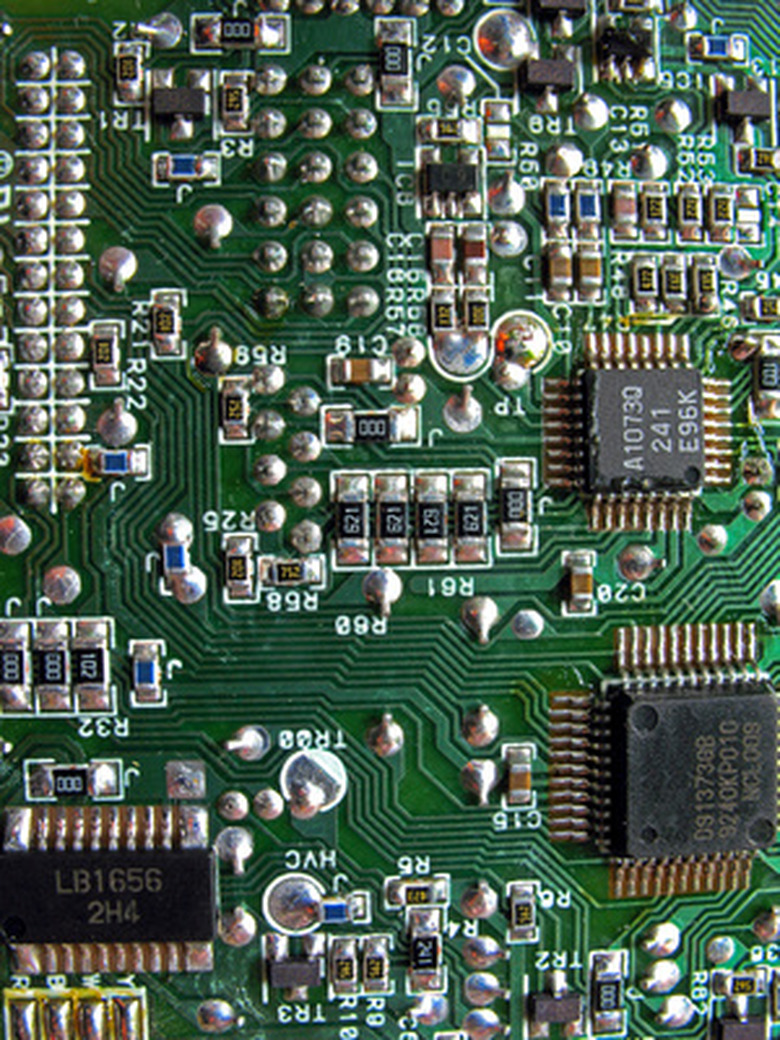How To Test An Antistatic Mat With A Meter
An antistatic mat uses a conductive plastic material to safely drain static electric charges away from a work surface. The electrical resistance of a mat's surface generally falls in a range of 1 megohm, or million ohms, to 10 gigohms, or billion ohms. A typical multimeter you might buy at an electronics shop can't measure resistances this high, but specialty equipment outlets sell meters capable of testing antistatic mats. Over time, accumulated dirt will interfere with the mat's electrical resistance. Periodic testing with the right meter will tell you when to clean or replace the mat.
Step 1
Lay the mat on a clean, flat, nonconducting surface.
Step 2
Turn the ESD test meter on. Connect one of its probes to the mat's metal grounding rivet or clip. Connect the other probe to the furthest point on the mat's top surface.
Step 3
Read the meter's display. Some meters have an resistance gauge, and some have "good," "high" and "low" resistance lights. A mat in good condition will read between 1 megohm and 10 gigohms, or it should light its "good" light.
Step 4
Disconnect the probes. Touch the metal contact of one probe to a point on the mat's edge, and touch the other probe to the edge directly across from the first probe. Move the probes to several points around the mat's edge, always keeping the full width of the mat between them. The meter should have fairly consistent resistance readings, or light its "good" light. If it doesn't, clean the mat with a mild cleaning agent and retest it.
TL;DR (Too Long; Didn't Read)
A mat with rectangular proportions will have different resistance readings because of the different distances between the probes at different edge points. The readings may vary by a factor of five but should not decrease below 1 megohm or increase beyond 10 gigohms.
Cite This Article
MLA
Papiewski, John. "How To Test An Antistatic Mat With A Meter" sciencing.com, https://www.sciencing.com/test-antistatic-mat-meter-7909467/. 24 April 2017.
APA
Papiewski, John. (2017, April 24). How To Test An Antistatic Mat With A Meter. sciencing.com. Retrieved from https://www.sciencing.com/test-antistatic-mat-meter-7909467/
Chicago
Papiewski, John. How To Test An Antistatic Mat With A Meter last modified March 24, 2022. https://www.sciencing.com/test-antistatic-mat-meter-7909467/
